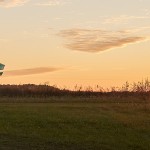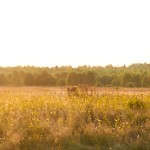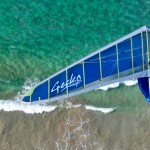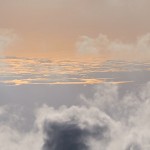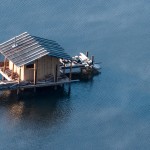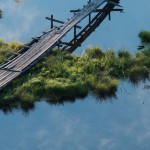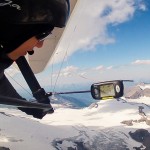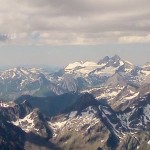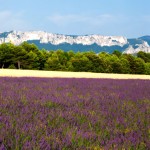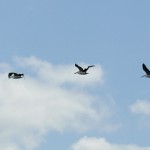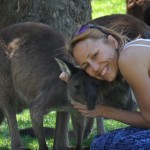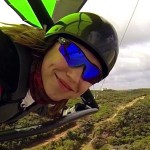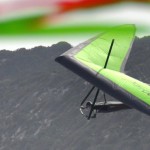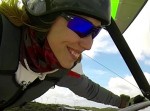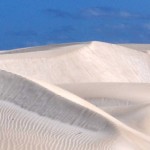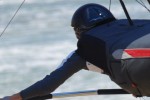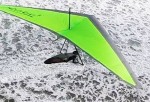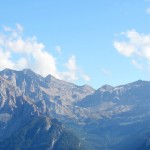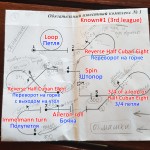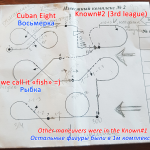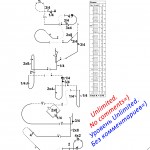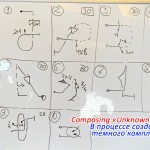About the essence of aerobatic competitions
Про суть пилотажных соревнований
Aerobatics competition in Usman, p.3
Пилотажные соревнования в Усмани, ч.3
Here is a little about the essence of aerobatic competitions. The thing is, at the Usman’s competition, not only Andrey took part this time, but even — quite unexpectedly — I did, too. And I, of course, want to share a few thoughts on this, but in a way that not only aerobatic pilots would understand.
Немного про суть самолётных соревнований по пилотажу, а то в соревнованиях в Усмани поучаствовал в этот раз не только Андрей, но даже — совершенно неожиданно — я. И мне, понятное дело, хочется написать несколько мыслей по этому поводу, но так, чтобы их поняли не только пилотажники.
Aerobatic maneuvers
Фигуры высшего пилотажа
There are countless aerobatic maneuvers. Those that are known the most — such as a loop, barrel roll, spin, etc. — are child’s play. There are many more maneuvers than you and I together can imagine. They are listed in the Aresti catalog. For each maneuver there is a notation — a kind of aerobatic hieroglyph that each aerobatics pilot quickly understands, even if they are seeing this maneuver for the first time.
Существует бесчисленное множество фигур высшего пилотажа. Те, что на слуху, — петля, бочка, штопор и т.п. — это прям совсем детский сад. Фигур гораздо больше, чем вы или я можем представить. Они перечислены в каталоге Арести. Для каждой фигуры есть обозначение — эдакий пилотажный иероглиф, который быстро понимает пилот, даже если впервые видит эту фигуру.
Flight programs
Пилотажные комплексы
Flight programs are composed of a sequence of aerobatic maneuvers. In the recent competitions in Usman, for example, pilots of different levels had sequences of seven to fourteen maneuvers in their flight programs.
Из фигур составляются пилотажные комплексы. На прошедших соревнованиях в Усмани, к примеру, у пилотов разного уровня в комплексе было от 7 до 14 фигур пилотажа.
It is much more difficult to perform a flight program than individual maneuvers. For instance, different maneuvers require different speeds at the entrance and produce different speeds at the exit of a maneuver, and yet they must be connected properly. Moreover, the direction and strength of the wind must be taken into account, and how much altitude is lost (or gained) on each figure, etc. Therefore, during a flight program, a pilot has to always be planning two to three maneuvers ahead in his mind! This very quickly turns this sport not only into a measurement of the aerobatic skills level, but also into a kind of mental gymnastics and aerial chess combined, where one has to think quickly and calculate everything perfectly. In my case, for now, — I was content with merely maintaining the ability to think clearly under the combined duress of both G-loads and being upside down.
Летать комплекс гораздо сложнее, чем отдельные фигуры, потому что у разных фигур — разная скорость на входе и на выходе, а их надо правильно соединять, плюс надо учитывать направление и силу ветра, сколько высоты теряется (или набирается) на каждой фигуре и т.п. Поэтому во время комплекса надо думать на 2-3 фигуры вперед! Что очень быстро превращает спорт не только в измерение уровня пилотажного мастерства, а еще и в скоростные воздушные шахматы, когда нужно быстро думать и всё хорошо просчитывать. В моем случае пока что — хотя бы просто сохранять способность думать на перегрузках и вверх ногами.
Here’s a video that shows one of the two Andrey’s flight programs during last week’s competition.
На видео ниже — один из двух пилотажных комплексов Андрея на соревнованиях.
Aerobatic box
Пилотажный куб
The aerobatic flight program must fit into a dimension of airspace measuring 1 km x 1 km x 1 km, called the «aerobatic box». During the competitions a square 1 km x 1 km is marked on the ground, and pilots use their instruments to judge the altitude (our judges estimate our altitude visually, simply using their eyes!). For the beginner level aerobatic pilots, the aerobatic box is offset 600 meters above the ground for safety (that is, we fly at altitudes from 600 up to 1600 m). For the most experienced pilots the box floor is only 100 m above the ground!
Пилотажный комплекс на соревнованиях надо умещать в пространстве в “пилотажный куб” размером 1 км х 1 км х 1 км. Для этого на земле размечают пилотажный квадрат размером 1 км х 1 км, а высоту мы смотрим по приборам (а наши судьи — на глаз!). У начинающих пилотажников для безопасности пилотажный куб поднят над землей на 600 метров (то есть, мы летаем на высотах от 600 до 1600 м), а у самых опытных — всего на 100 м!
From the air, the aerobatic square marked on the ground looks very small, like some kind of postage stamp! Moreover, when you are above it, it is completely covered by your own wing, and you can only see it during the maneuvers when you are upside down or when the nose of the airplane is pointing almost vertically down. Moreover, at our speeds, it takes only a few seconds to bust out of the square, so you can’t lose concentration between the maneuvers and you really need to focus every second!!!
С воздуха размеченный на земле квадрат выглядит очень маленьким, просто почтовая марка какая-то! Более того, когда находишься над ним, он полностью закрыт своим же крылом, и увидеть его можно только фигурах, когда ты перевернут или когда нос направлен почти вертикально вниз. Плюс, на наших скоростях этот квадрат пролетается за несколько секунд, поэтому нельзя мешкать между фигурами и нужно реально считать каждую секунду!!!
Types of flight programs
Виды пилотажных комплексов
There are several types of aerobatic flight programs. «Known» programs are published at the beginning of the year and should be practiced in advance. “Free Known” programs are composed by the pilots themselves according to some requirements, and they also are practiced in advance. “Unknown” (or as we call it “dark”) programs are formed by competing pilots together during the competition. Pilots throw complex maneuvers in, hoping to overwhelm each other. It almost feels like a «Hunger Games» of some sort! Very funny! Such flight programs are flown without practice about 12 hours after its compilation. “Dark” flight programs are the most interesting part of aerobatic competitions, but they are flown only in the experienced pilots leagues.
Есть несколько разновидностей пилотажных комплексов. “Известные” комплексы публикуются в начале года и их можно тренировать заранее. “Произвольные” комплексы пилоты составляют сами себе по некоторым требованиям, и тоже тренируют заранее. “Неизвестные” (или “тёмные”) — составляются конкурирующими пилотами прямо на соревнованиях, когда пилоты подкидывают друг другу сложные фигуры, надеясь друг друга завалить. “Голодные игры” какие-то! Очень весело! Такие комплексы летаются без тренировки, через ~12 часов после составления. В “тёмных” комплексах, вообще, самый смак пилотажных соревнований, но они есть только у старших лиг.
There are all sorts of nuances to flight program composition. There are also freestyle programs — you can read about it on Wikipedia if you are interested.
Есть еще всякие нюансы, существуют еще фристайл-комплексы — можно в википедии почитать, кому интересно.
The photos below show my aerobatic flight programs with explanations.
На фото — мои пилотажные комплексы с пояснениями.
Soon you and I will speak the same «aerobaitcs» language.
Ещё чуть-чуть, и будем говорить с вами на одном языке).
Power categories
Лиги/уровни сложности
The aerobatic competition has six categories of difficulty, and each category has a separate ranking, separate medals, and separate champions. From beginner to experienced level:
В соревнованиях есть шесть уровней сложности, и у каждого уровня — отдельный зачет, отдельные медали и чемпионы. От начинающих к опытным:
- «3rd league» (or Primary/Club),
- “3 лига” (или класс с ограничениями уровень сложности 3, англ. Primary/Club),
- “2nd league” (or Sportsman/Sports),
- “2 лига” (или класс с ограничениями уровень сложности 2, англ. Sportsman/Sports),
- Intermediate and «Yak-52 league» are of the same difficulty level. It’s just that in the intermediate class there can be any aircraft, while in the Yak-52 league — only a Yak-52,
- класс промежуточный (англ. Intermediate) и “лига Як-52” — лиги одного уровня сложности, просто в промежуточном классе могут быть любые самолеты, а в Як-52 — только Як-52,
- Advanced,
- класс с ограничениями («1 лига”/класс с ограничениями уровень сложности 1, англ. Advanced),
- Unlimited.
- класс неограниченный (англ. Unlimited).
Andrey, for example, flew in the 3rd league last Autumn, and this Spring he flies in the 2nd. I, of course, flew in the 3rd league, although with the level I am at now I would better fit in the 4th (Bozo?) league, but that does not exist. Maybe I should start one!
Андрей, например, летал прошлой осенью в 3й лиге, а сейчас уже во 2й. Я, конечно, полетела в 3й, хотя по уровню мне бы в 4ю, но такой не существует.
Aside from the complexity and number of maneuvers, and the altitude, the leagues differ in the number of flight programs flown during the competition. The third league flies two Known programs. The second league flies one Known and one Free programs. The senior leagues fly four programs, three of which are “dark”.
Помимо сложности и количества фигур, а также высоты пилотажа, лиги отличаются количеством комплексов на соревнованиях. Третья лига летает два известных комплекса, вторая летает один известный и один произвольный, а вот старшие лиги — по четыре комплекса, три из которых — тёмные.
Another difference is that the 3rd league pilots fly with a safety pilot in the back. The safety pilot is obliged to remain silent and not touch anything, and only intervene in case of real danger. Pilots of other leagues can fly with a safety pilot if they want to (for example, the owner of the plane leases his plane only on such conditions; or a participant learned to pilot a new plane, but not to land it yet).
Плюс, пилоты 3-й лиги летают с пилотом безопасности сзади. Пилот безопасности обязан молчать и ничего не трогать, и вмешаться только в случае реальной опасности. Пилоты остальных лиг могут летать с пилотом безопасности по желанию (например, хозяин самолёта даёт свой самолёт в аренду только на таких условиях, или пилотажить на новом самолете научился, а приземляться — нет).
In all leagues, except for the Yak-52 league, you can fly any aerobatic piston-powered single-engine airplane (here they flew Yak-52, Yak-55, Extra 330, Su-26). For Yak-52 pilots, the eponymous league is the final, top level, because this aircraft can’t handle Advanced and Unlimited maneuvers.
Во всех лигах, кроме лиги Як-52, можно летать на любых пилотажных самолетах (тут летали на Як-52, Як-55, Экстрах 330, Су-26). При этом для самолёта Як-52 одноименная лига — топовая, так как Advanced и Unlimited этот самолет уже не потянет.
Judging
Судейство
The most interesting thing about the competition is judging. I will write a separate entry about it, because this is getting too long otherwise, and judging here is really interesting. The most important thing is that the judging is carried out exclusively visually, by eye!! This means aerobatic maneuvers should not be performed perfectly correct, but they should look perfectly correct from the angle from which the judges are looking! And for this you have to fly a little not-correctly sometimes. Which is the additional challenge we relish that adds to the chess-like nature of the competition. I’ll try to clarify it all for you next time.
И самое-пресамое интересное на соревнованиях — это судейство. Я напишу отдельный пост про него, а то уже много получилось, а это прям интересно. Но самое главное — судейство осуществляется исключительно визуально, на глаз! То есть, летать пилотажные фигуры надо не идеально правильно, а так, чтобы они смотрелись идеально правильно с угла, с которого смотрят судьи! А для этого надо иногда летать немного неправильно. И в этом дополнительный смак и шахматность соревнований. Огонь, в общем! Попробую получше рассказать в следующий раз.

